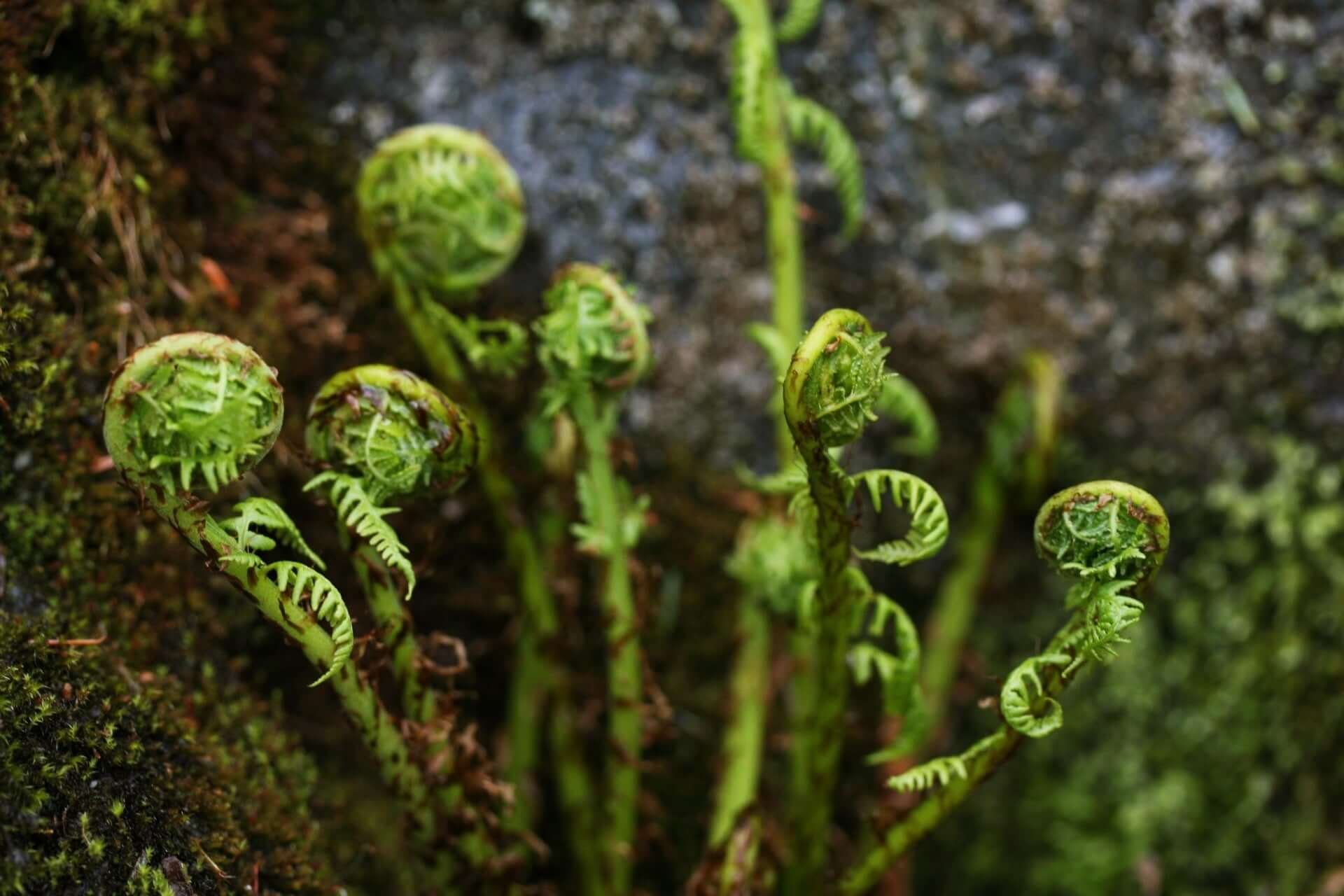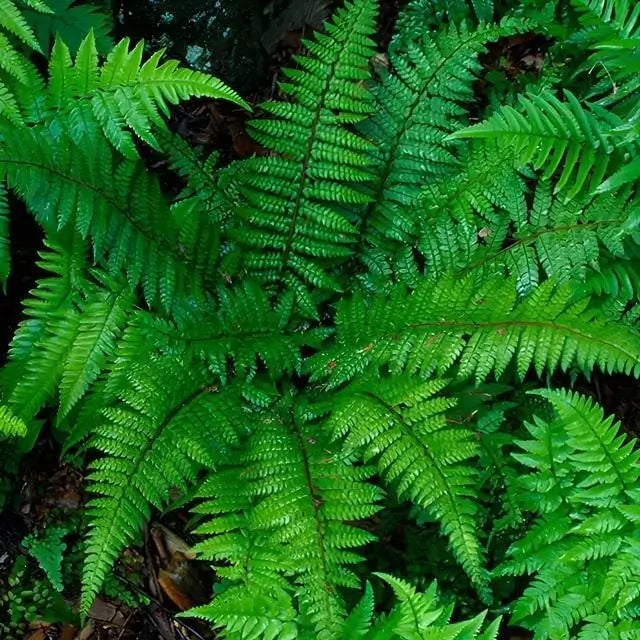The Christmas fern (Polystichum acrostichoides) is a versatile and long-lasting addition to any shade garden. It is beloved for its evergreen fronds and ease of care. With its rich, dark green foliage and sturdy growth habit, this fern offers year-round visual interest, making it a standout choice for those looking to add texture and life to their landscapes, even in the winter months when most plants go dormant.
The Christmas fern is one of North America's most enduring native plants, known for its resilience and role in enriching woodland settings. Its name comes from its ability to stay green even in the winter, resembling festive Christmas decorations during the holiday season. Whether tucked beneath towering trees or sprawled along shaded garden paths, this fern adds a touch of timeless charm to any garden space.
Do Christmas ferns come back every year?
Yes, Christmas ferns are perennial plants, meaning they return year after year without replanting. Their hardy nature allows them to thrive in diverse conditions, making them a reliable addition to gardens across various climates. Even in colder regions, where winter frosts can be harsh, Christmas ferns persist through the seasons. Their fronds remain green throughout winter, providing lush greenery when most other plants are either dormant or faded.
While the plant may not produce new growth in the coldest months, its evergreen fronds stay intact, offering garden interest until new growth begins again in the spring. In milder climates, the Christmas fern may experience subtle growth during winter. These ferns come back every year, making them a low-maintenance choice for gardeners who want something long-lasting with minimal upkeep required.
Do Christmas ferns like sun or shade?
Christmas ferns are naturally shade-loving plants. They often thrive beneath dense tree canopies in their natural habitat, where direct sunlight is filtered through the leaves above. In the garden, they perform best in part to full shade, making them a perfect option for challenging spots where many other plants struggle to grow.
While they can tolerate a small amount of spotty sunlight, too much exposure to direct sun can cause their fronds to scorch, particularly in hot summers. Therefore, if you plan on planting Christmas ferns in your garden, choosing a location that provides ample shade, such as beneath trees or along the north side of buildings or structures, is best.

In addition to providing shade, it's essential to ensure that the soil is rich and remains moist, as this mimics the fern's natural woodland environment. Christmas ferns thrive in loamy or slightly acidic soils, and while they can tolerate periods of dryness, they prefer consistently moist conditions.
How tall do Christmas ferns get?
Christmas ferns can grow to a modest height, typically reaching between 12 to 24 inches tall. While their fronds can vary in length, they generally create a clumping habit that can span a similar width. This size makes them perfect for ground cover or adding texture and height to shady garden beds without overwhelming the surrounding plants.
The Christmas fern's fronds are tall and graceful, arching upward and then gently cascading outward, giving the plant a lush, layered appearance. The leaflets of each frond are arranged in a symmetrical pattern along the stem, which adds to the fern's overall structural appeal. As the plant matures, its clumps will gradually grow denser, providing a fuller, more impactful presence in the garden.
Because they are relatively low-growing, Christmas ferns are often used as ground cover to fill bare spots beneath trees or along shaded pathways. Their height and spread also make them a great companion for other woodland plants such as hostas, wild ginger, or heuchera, as they provide a rich contrast in texture and color.
Do Christmas ferns multiply?
Yes, Christmas ferns do multiply, but in a slow and non-invasive manner, making them a well-behaved addition to any garden. Over time, the plant forms a dense clump, with new fronds emerging from the plant's crown each spring. These ferns spread through the development of new root crowns rather than by sending out rhizomes, so while they will gradually expand their territory, they won't take over your garden or crowd out other plants.
One of the joys of cultivating Christmas ferns is watching them slowly naturalize over the years. If left undisturbed, a mature fern will continue to develop new fronds, gradually increasing the size of the clump and filling in gaps in the landscape. To speed up the multiplication process, you can divide them every few years in early spring or fall. This will give you more plants and help rejuvenate older ferns, keeping them healthy and vigorous.
The multiplication of Christmas ferns provides gardeners with a natural solution for creating lush, shaded landscapes. While they take their time to spread, their steady growth ensures that they remain a controlled and elegant part of any garden design.
Christmas ferns bring a sense of enduring beauty to shaded gardens, with their evergreen fronds adding color and texture year-round. They are a reliable, low-maintenance option for anyone looking to add a woodland charm to their outdoor spaces. Whether you're planting them as ground cover, using them to fill in shaded corners, or pairing them with other shade-loving plants, Christmas ferns will improve the visual attraction of your garden while requiring minimal care in return. Their ability to return year after year, multiply slowly, and tolerate various conditions makes them a timeless favorite for gardeners seeking a classic, resilient fern.
Read more

Ostrich ferns are a perfect addition to any shaded garden. Their ability to spread and fill out a garden bed makes them a valuable landscape plant for those who appreciate a lush, green look withou...

Fiddlehead ferns are a beautiful addition to any garden, bringing a sense of woodland serenity. Their rapid growth and culinary appeal make them a great addition to your gardening wish list.



